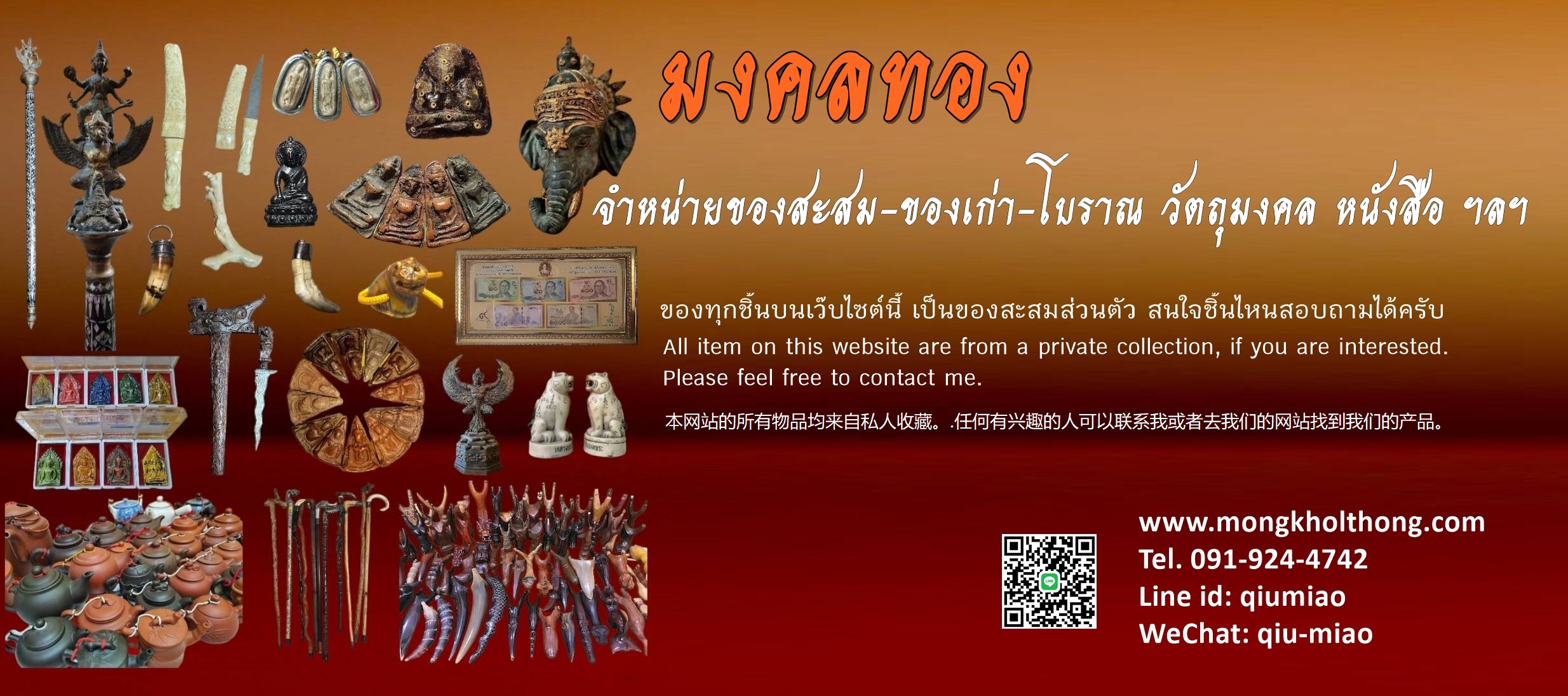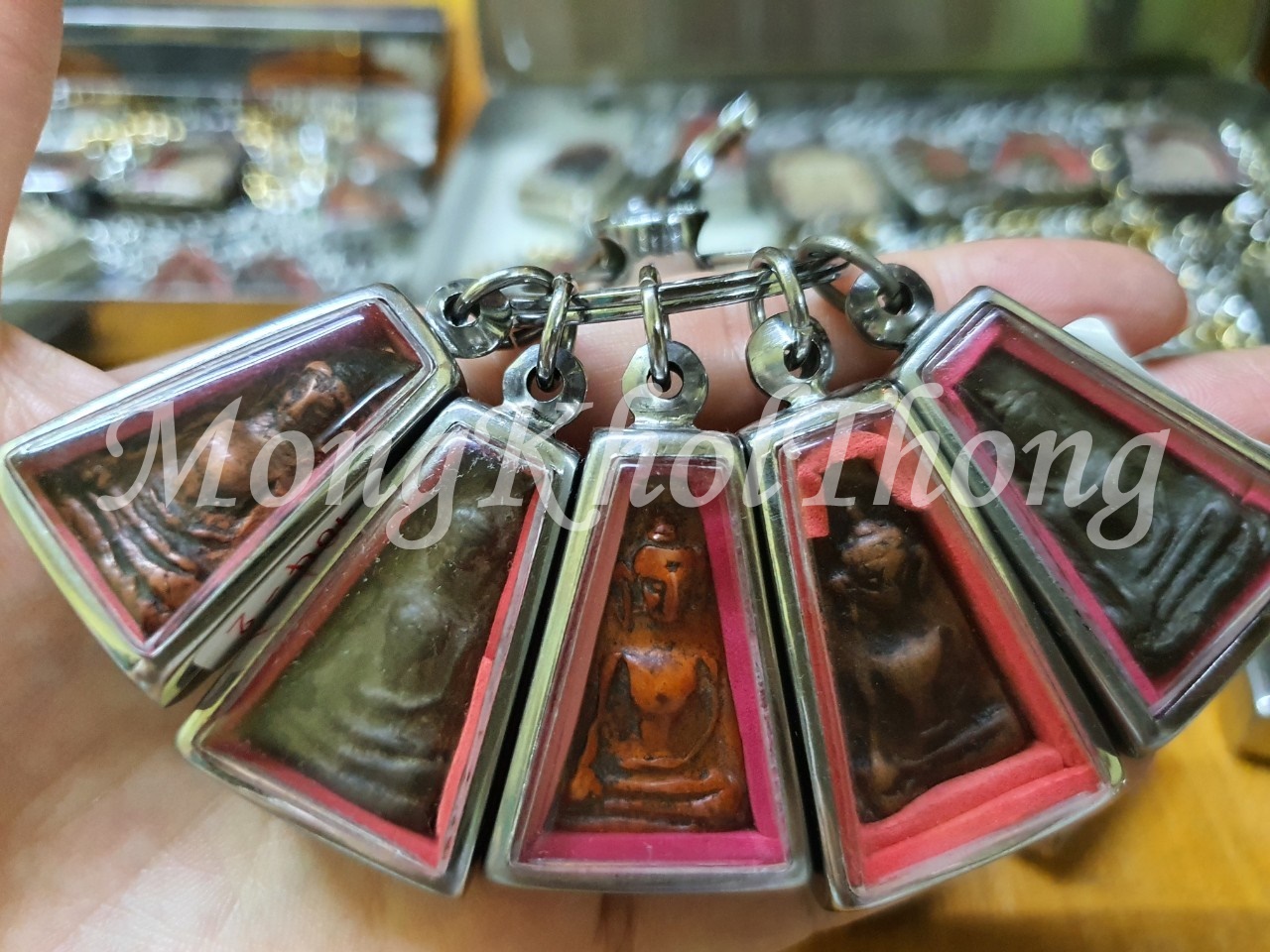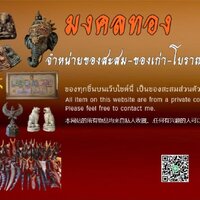帕蓬素潘(Phra Phong Suphan): 永無絕景佛,出土于泰国中部的素攀武里府,创造于乌通王朝时期,大约八百多年历史。埋藏在瓦马哈塔(Wat Mahathard)的舍利塔里,是以前的鲁士辟拉莱所制。于半世纪前,有瓦马哈塔的僧侣委员会举行公祭开塔仪式,恭请佛牌出塔,以供善信自由捐庙恭请。剩余的就原封不动,封塔保存至今。目前拍蓬素潘佛牌可达两边网泰铢。约有3种模子,4种不同颜色,分别是红、绿、黑、褐,以抵抗物理伤害为著名。相传其拥有各种佛力,包括佛法、功德、神力, 故至今极少有大师或寺庙制作,同时佩戴者将永不坠入绝境,就算坠入绝境亦能翻身再起。
Phra PhongSuphan
The Buddhist art of Phra Phong Suphan was U-Thong period. Most of them are made in the attitude of sub-during Mara. There were specific qualities such as compounds and other mixers with good virtue and bringing general prosperity or providing supernatural powers. Phra Pong Suphan of Suphanburi is a very popular for collectors.
Phra Phong Suphan were made in 3 moulds:
1. Pim Na-kae (old face)
2. Pim Na-Klang (middle face)
3. Pim Na-Noom (young face)
There are 4 colors: yellow, red, green and black. The different colors were from level of temperature while burnt.
Phra Phong Suphan is good holiness in every aspect such as immortal, harmless, safe from weapons, bringing good-will and very high value.
Phra Phong Suphan deserved to be one of the Grand Five set of Benjapakee the most famous and powerful amulets of Thailand forever.
Phra Phong Suphan made from
1. Fine-grained clay mixed with flora and 108 pollens.
2. High concentration of herb medicine juice or “Kae Wan” in Thai
3. Another content is mixed alloy of lead and tin which called in Thai “Phra Phong Suphan Nua Chin Ngern” or “Phra Phong Suphan Yod Toh” (contain in pot at top of pagoda)
Discovering of Phra Phong Suphan:
The great Buddha amulets from SuphanBuri Province, famous and popular among all admirers are "Phra PhongSuphan" Kru (pits under pagoda) Wat Phra Srirattanamahatarth Suphanburi where was once in the heart of the ancient town Suphannaphum.
The amulets were founded in B.E. 2456 (A.D. 1913) by a monk on pilgrimage who got the clue to a treasure trove. He hired the Chinese man to dig out as specified in treasure clue but the monk did not bring out anything from pits except golden casket. Afterwards, Chinese man had stolen the treasurer including Phra Phong Suphan from pits to sell to market. Later on the governor of the city named Phraya SuntornBuri (Ie Kannasutra) had opened up the pit officially and found many Buddha amulets and antiques. Some of amulets were presented to King Rama VI.











